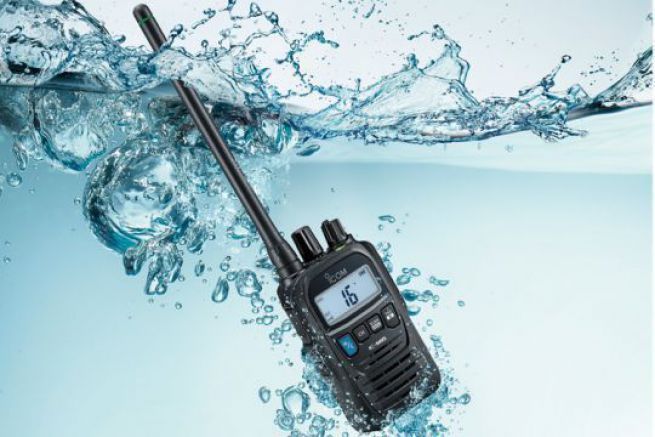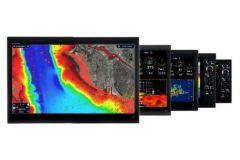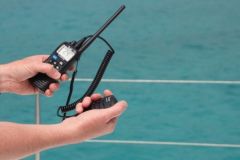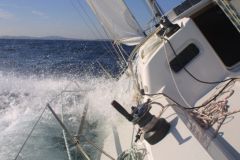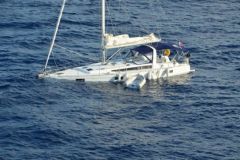In catalogs, brochures and technical descriptions of products for the boating industry, we often speak of IP standards. For example, you may find that the VHF Icom IC-M85E is IP67 . But what does it mean?
The standard IP means Protection Index . The two letters IP are accompanied by 2 numbers :
- 1st digit: protection against solids (dust, sand, etc.)
- 2nd digit: protection against water intrusion
Sometimes it says IPX6, for example. This means that the first digit is replaced by an X when there is no indication of protection against solids.
1st digit (ten) : Protection against solids
- 0 : No protection
- 1: Protected against solid objects larger than 50 mm
- 2: Protected against solid objects larger than 12.5 mm
- 3: Protected against solids larger than 2.5 mm
- 4: Protected against solids larger than 1 mm
- 5 : Protected against dust and other microscopic residues
- 6 : Fully protected against dust
2nd digit (unit) : Protection against water intrusion
- 0 : No protection
- 1: Protected against vertically falling drops of water
- 2: Protected against falling drops of water up to 15° from vertical
- 3: Protected against rainwater up to 60° from vertical
- 4: Protected against splashing water from all directions
- 5: Protected against water jets from all directions (6.3 mm nozzle, distance 2.5 to 3 m, flow 12.5 l/min ±5%)
- 6: Protected against strong water jets from all directions (12.5 mm nozzle, distance 2.5 m to 3 m, flow rate 100 l/min ±5%)
- 7: Protected against the effects of temporary immersionv (up to 1 m) and for 30 minutes
- 8: Equipment submersible under specified conditions of time and pressure (prolonged immersion) beyond 1 m. Normally, this means that the equipment is hermetically sealed; however, with certain types of equipment, it may mean that water can penetrate, but without producing harmful effects. Submergence protection
